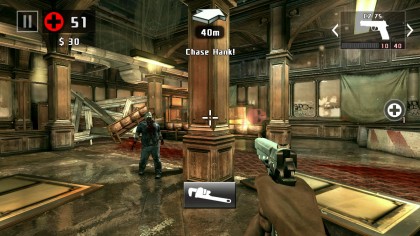Why you can trust TechRadar
Performance
As I mentioned in the previous section, the ZTE Blade S6 runs on Qualcomm's Snapdragon 615 CPU. This capable chip may be middle-of-the-range, but it has a couple of advanced features up its sleeve that serve to boost the ZTE Blade S6's performance.
The Snapdragon 615 is a quad-core (octa-core actually, but I'll discuss that in the battery section) chip running at 1.7GHz. As stated, the headline spec here is the chip's 64-bit architecture, though that doesn't mean that it outperforms last year's flagship 32-bit chip, the Snapdragon 801.
As my Geekbench 3 benchmark tests reveal, the Snapdragon 615 chip (backed by 2GB of RAM) performs similarly to the Snapdragon 600 it replaces – that's the chip that powered the HTC One M7 and other 2013 flagships – in single-core terms.
When it comes to multi-core performance, which is useful for high-end tasks like 3D gaming, the ZTE Blade S6 and its Snapdragon 615 chip are roughly in the region of Snapdragon 800-powered devices like the Nexus 5.
Or, to put it another way, the ZTE Blade S6 is pretty much halfway in between the Samsung Galaxy S4 and the Samsung Galaxy S5.
Not bad at all for this price.

Combined with a fluid and relatively unmolested Android 5.0 Lollipop OS, the ZTE Blade S6 performs brilliantly in general tasks, with navigation smooth and snappy.
Sign up for breaking news, reviews, opinion, top tech deals, and more.
When pushing it a little harder with 3D games, performance remained strong. Real Racing 3's impressive 3D racing was rendered pretty much flawlessly here, as was Trials: Frontier's wince-inducing bike physics action.
With the graphics settings bumped up to high, Dead Trigger 2's advanced reflections caused the Blade S6 to strain a little, but it was still perfectly playable.
All in all, you can't get a better performing phone for less than £200.
Battery life
The ZTE Blade S6's 2,400mAh battery provides adequate stamina - decent at a push - but it's nothing special.
After a day of moderate usage (with the phone switched to airplane mode overnight), I would find that the phone had less than 30% left in the tank.

"Moderate usage" here involved 20 minutes or so of 3D gaming, a little light web browsing, and frequent email and text message checks and responses, with regular notifications coming through.
When put through the standard TechRadar test of a 90 minute 720p video, with screen brightness set to full, the Blade S6 was left with 83% battery life.
That's pretty good going, and is roughly equivalent to the Honor 6 and the Samsung Galaxy S5.
True, those phones have sharper, more power-hungry 1080p displays, but they also have significantly larger batteries.
Aiding this battery life, the ZTE Blade S6's Snapdragon 615 processor is built to ARM's big.LITTLE standard, which means that it flips between two quad-core set-ups according to the intensity of the task at hand.
All in all, you'll be able to get through a day of usage fairly comfortably, but any more will be pushing it.

Jon is a freelance journalist who has been covering tech since the dawn of the smartphone era. Besides TechRadar, his words and pictures have appeared in The Telegraph, ShortList, Tech Advisor, Trusted Reviews, Expert Reviews, and more. He largely covers consumer technology, with a particular focus on smartphones and tablets. However, he's also been known to dabble in the worlds of entertainment and video games.
